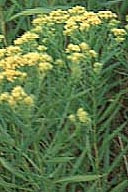 Loading... Please wait...
Loading... Please wait...- Home
- SEEDS
- SEED MIXES
- BUY PLANTS
- Info Request
-
Educational Videos
- Greenhouse Transplanting Demonstration
- Native Seed Cleaning demonstration at Ion Exchange Native Seed and Plant Nursery
- Attracting Butterflies
- Bidens - Bidens cernua Harvest Video
- Big Blue Stem Harvest
- Butterfly Milkweed Video
- Button Blazingstar - Liatris aspera Video
- Buttonbush - Cephalanthus occidentalis Video
- Canada Anemone - Anemone canadensis Harvest Video
- Cardinal Flower - Lobelia cardinalis Video
- Control Burn - Wildflower Field
- Cream Gentian - Gentiana flavida
- Culver's Root - Veronicastrum virginicum Video
- Cup Plant - Silphium perfoliatum Video
- Dormant Seeding | Planting
- Earthyman's Favorite Wildflowers Video
- Eco-Friendly Golf Course Seed Mix
- Floating Islands
- Fringed Loosestrife - Lysimachia ciliata Video
- Giant Yellow Hyssop - Agastache nepetoides Video
- Indiangrass - Sorghastrum nutans Video
- Iowa Prairie Partner Program
- Leadplant - Amorpha canescens (Potted) Video
- Meadow Blazingstar - Liatris ligulistylis
- Midland Shooting Stars - Dodecatheon meadii Video
- Native Plant Nursery Field Irrigation Experiment
- Nodding Onion - Allium cernuum Video
- Ohio spiderwort - Tradescantia ohiensis Video
- Old Man's Beard - Clematis virginiana blooms Video
- Oxeye Sunflower - Heliopsis helianthoides Video
- Prairie Spiderwort - Tradescantia bracteata
- Purple Coneflower - Echinacea purpurea Video
- Rain Garden or Water Garden Video
- Rattlesnake Master - Eryngium yuccifolium Video
- Riverbank Stabilization - Wetland Plants
- Rose Mallow - Hibiscus militaris Video
- Rosinweed - Silphium integrifolium Video
- Royal Catchfly - Silene regia
- Showy Tick Trefoil - Desmodium canadense Video
- Sneezeweed - Helenium autumnale Video
- Swamp Betony - Pedicularis lanceolata Video
- Swamp Milkweed - Asclepias incarnata Video
- Sweet Blackeyed Susan - Rudbeckia subtomentosa Video
- Tall Coreopsis - Coreopsis tripteris Video
- Urban Butterfly Garden
- Wild Bergamot - Monarda fistulosa Video
- Wild Geranium - Geranium maculatum Harvest
- Wild Goldenglow - Rudbeckia lanciniata Video
- Wild Petunia - Ruellia humilis Harvest Video
- Woodland Knotweed - Polygonum virginianum Video
- Yellow Coneflower - Ratibida pinnata Video
- Blog
- Resources
- Policies
Contact Us
Phone:
563-419-0837
or 563-535-7231
Email:
hbright@ionXchange.com
Browse Products
Add to Wish List
You Recently Viewed...
Our Newsletter
SOLIDAGO GRAMINIFOLIA | Grass-leaved Goldenrod
Product Description
"Grass-leaved Goldenrod, Lance-leaved Goldenrod"
Solidago comes from the Latin word solido meaning "to strengthen; to make solid". Graminifolia is the Latin word for "grass-like leaves
| Sun Exposure | Prairie, Savanna |
| Soil Moisture | Wet, Wet Mesic, Dry Mesic, Dry |
| Bloom Time |
Summer, Fall |
| Bloom Color | Yellow |
| Max Height | 2 feet |
| Wetland Code | FACW- |
| Germ Code | C(60), D |
| Seeds Per Ounce | 350,000 |
Common throughout the Tallgrass area in damp places, along streambanks and along roadsides. This is the "common" flat-topped goldenrod most people are familiar with. Slender leaves have rough, untoothed edges and 3 to 5 (sometimes 7) parallel viens, yellow ray flowers (12 - 25) appear from July to October. Grows to 4 feet.
Edible Uses: The fresh or dried leaves are a tea substitute.
Medicinal Uses: Antiseptic. An infusion of the dried powdered herb can be used.
A decoction of the root has been used in the treatment of chest pains and lung problems. An infusion of the blossoms has been used in the treatment of some types of fevers.
Other Uses: Mustard, orange and brown dyes can be obtained from the whole plant.
Herbal Uses: Unknown

Product Reviews
-
Leonel

Posted by Leonel on 8th Jul 2012
Plant-based food: seeds, nuts, berries, plleon, fruit, foliage and twigs, nectar and sap are all good sources of plant-based food. Since birds and bugs are used to the balanced nutrition found from natural sources, this is the best way of feeding wildlife, and requires the least from you in terms of ongoing maintenance. Native plants are most likely to feed the wildlife living in your area, so if you're unsure of what to plant, you can be sure natives will be a hit.











